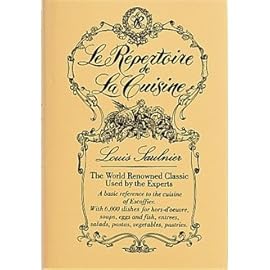The version on the right is not the one we are interested in. source
The style of Le Répertoire is highly unusual in that the recipes provided are little more than aides-mémoires and assume a great deal of background knowledge. The book does not make any allowances for the novice cook: no quantities are given (a chef is expected to be able to estimate these for himself) and frequent use is made of terms of art which are opaque to those without the necessary background. source
Let's remind ourselves about what was said earlier:


We now delve into the book. Here are its sections:
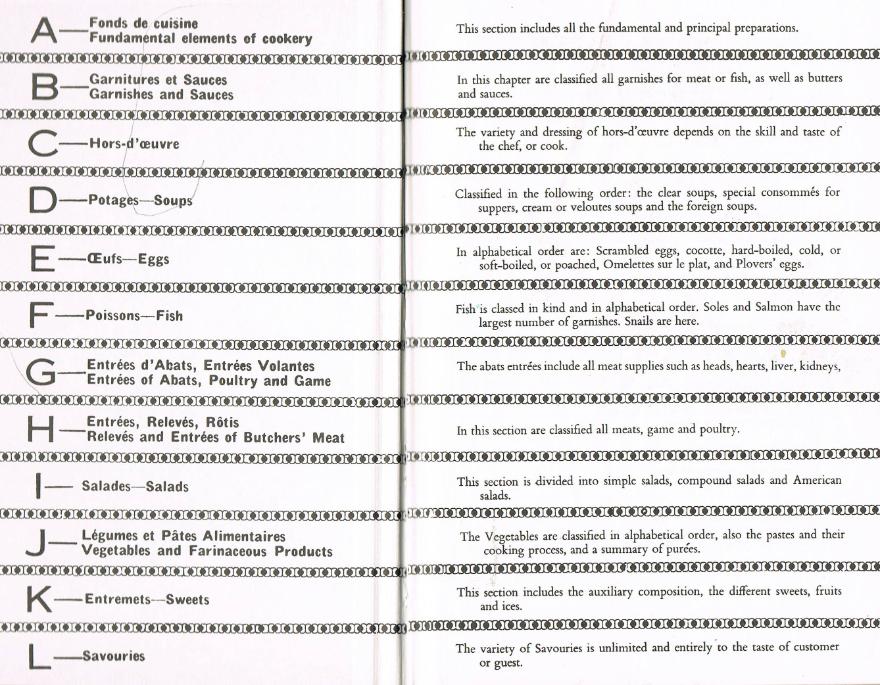
Our first look at a page relates to Selle d'agneau (Saddle of lamb) Romanov
Each page carries its section letter in the English version. After this page, it is not included in order to give a bigger graphic.
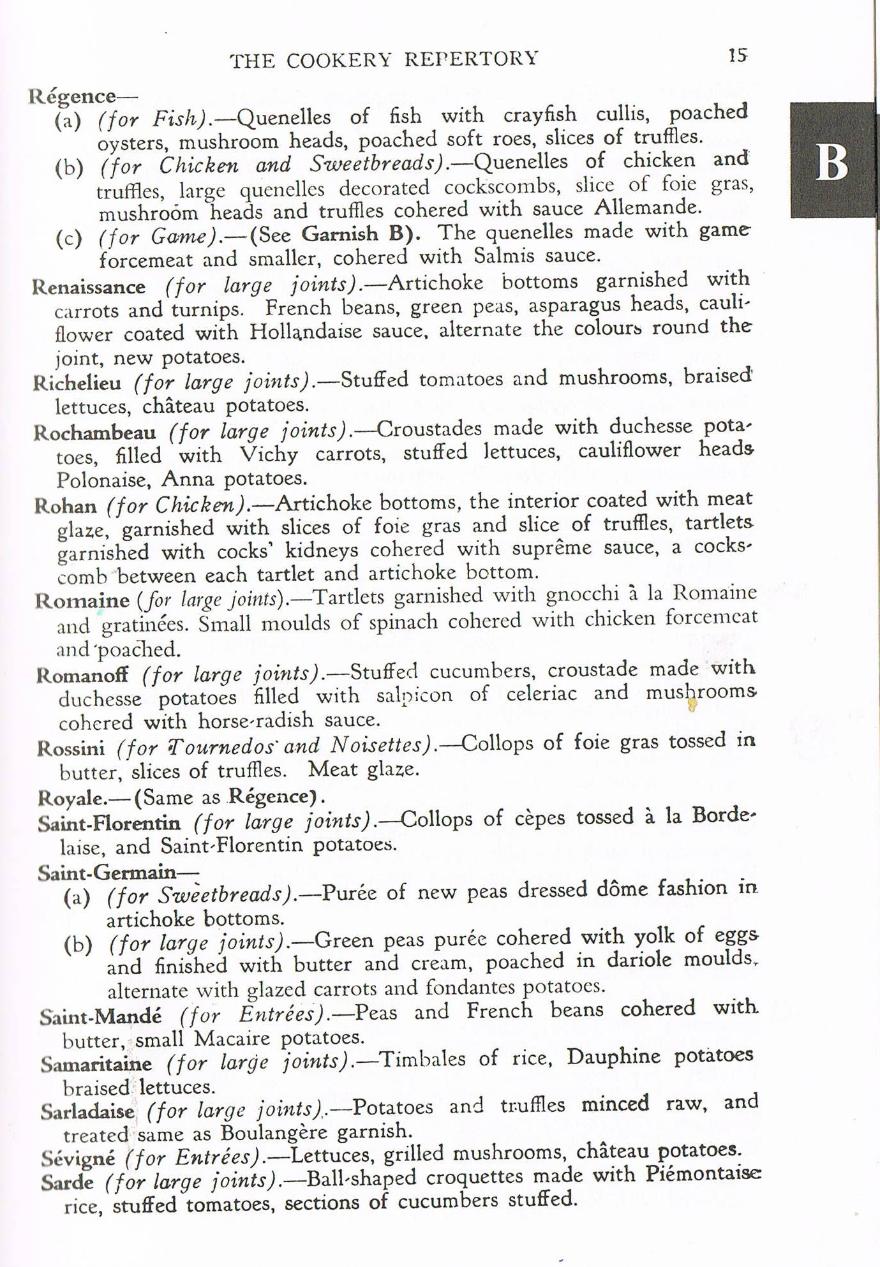
Noisettes de chevreuil Romanov
Noisettes de chevreuil (venison cutlets) Romanov are sauté and dressed in crown formation with pastry barquettes filled with cucumber/mushroom puree.
When you read it, you see that Poivrade sauce was omitted in the journal text due to space limitations. There are none here. Read the garnish first.
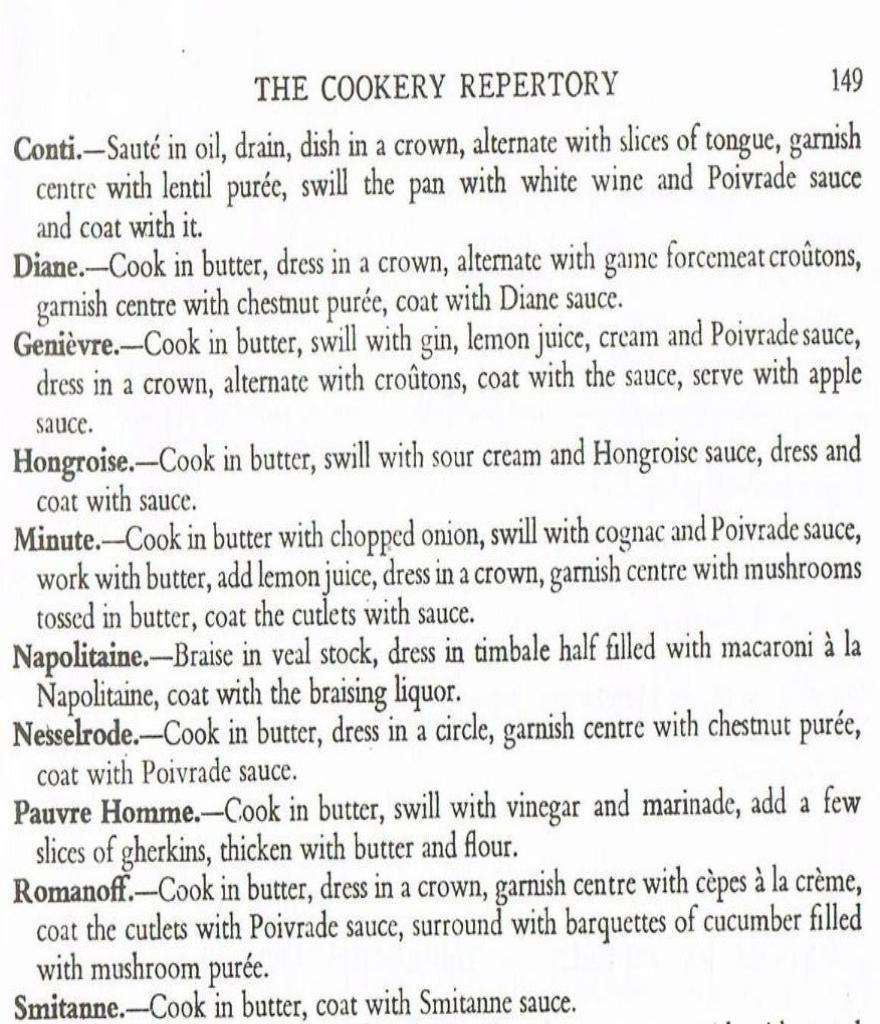
Sauce Poivrade
Now you see why it was omitted.

The same in French

"Marinade" in English and "marmade" in French deserve discussion. The French have the same meaning for marinade as in English. Why marmade?
The strainer and étamine also could be looked at. In its heyday, Sauce Hollandaise was squeezed through a tammy cloth and French editions refer to it as étamine. Sauce Piquante, as you read, uses the term. Sauce Poivrade is a different type of sauce. Either way, hygiene officers would be in tears today if the tammy cloth re-appeared!
Filet de veau (veal fillet) Romanov
It is when the fillet is taken off the ribs, cut lengthwise, coated with Béchamel sauce combined with sliced cèpes, flavoured with paprika, and placed back on the ribs. More Bechamel is poured over, this time combined with prawn coulis. If that is insufficient, add braised fennel.
The full description is repeated with emphasis on sliced cèpes.
Here is the right page. The chef zooms down to the foot of the page. If he knows how to cook a saddle of lamb in Metternich style, he gets on with the job. If, however, he doesn't, he looks across at the description. It is almost an endless avenue as you will see after reading this page.
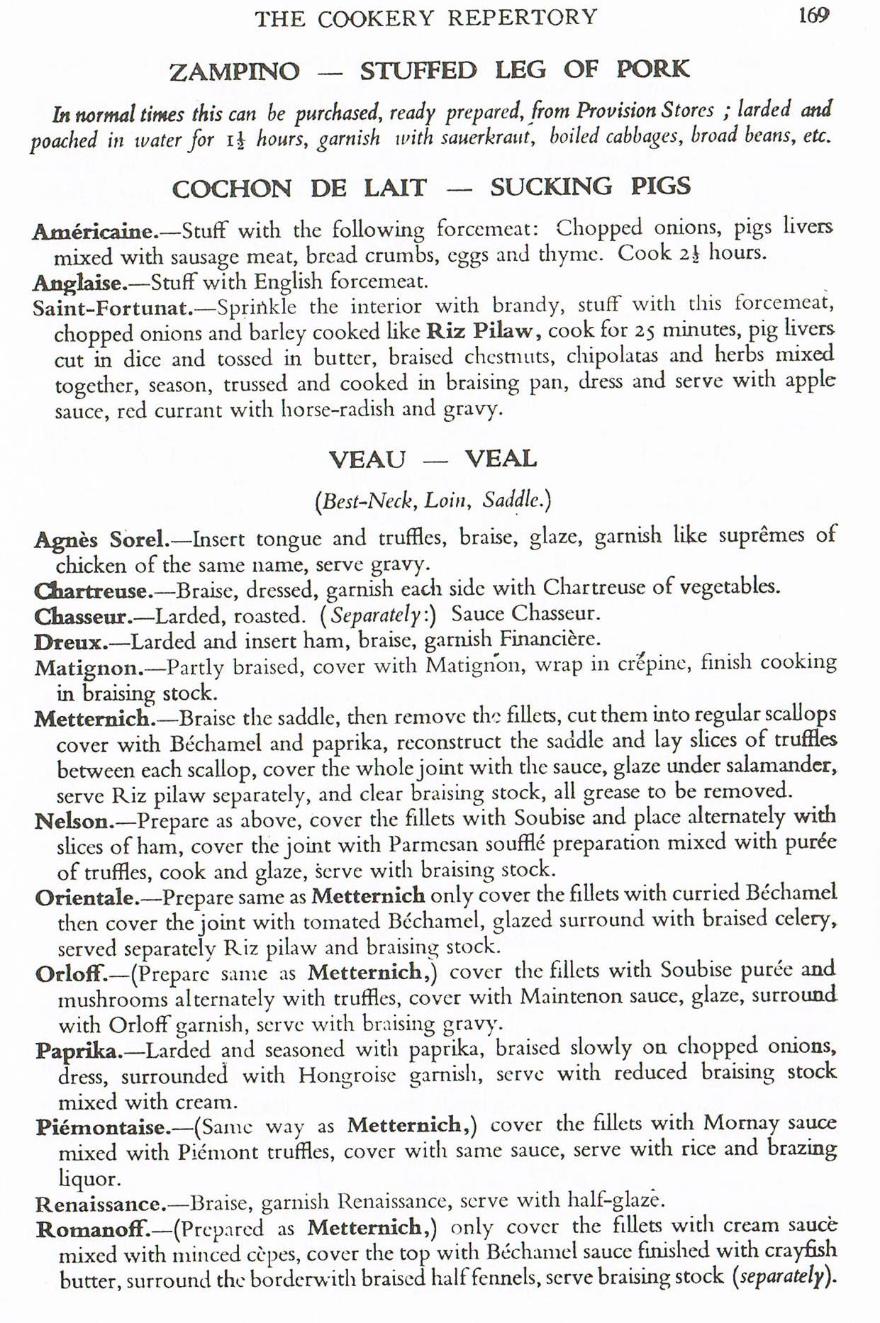
Look across the page now for Metternich:.
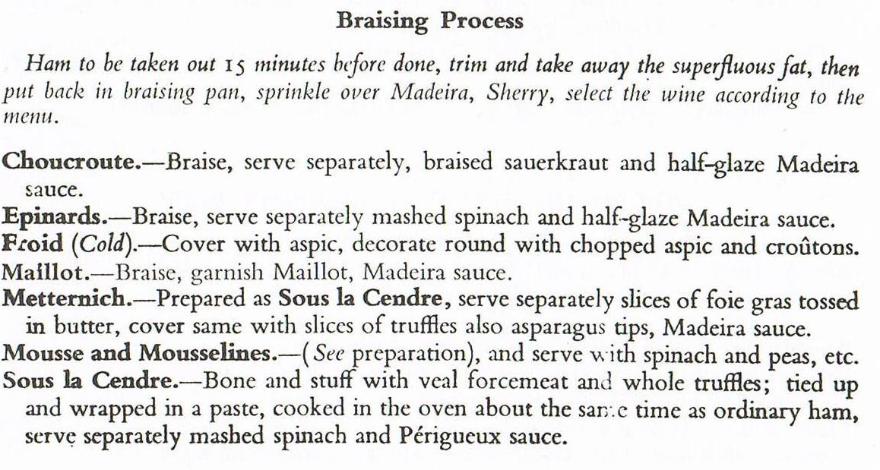
The avenue has ended. Back to sliced cèpes. You note that in the English translation, they are minced. The French editions give émincé

Isn't French easy when you have seen all the relevant English before?! Whoever translated émincé into sliced was neither French nor cuisinely proficient. Mince anything in the mushroom family and you end up with gunge-laden water.
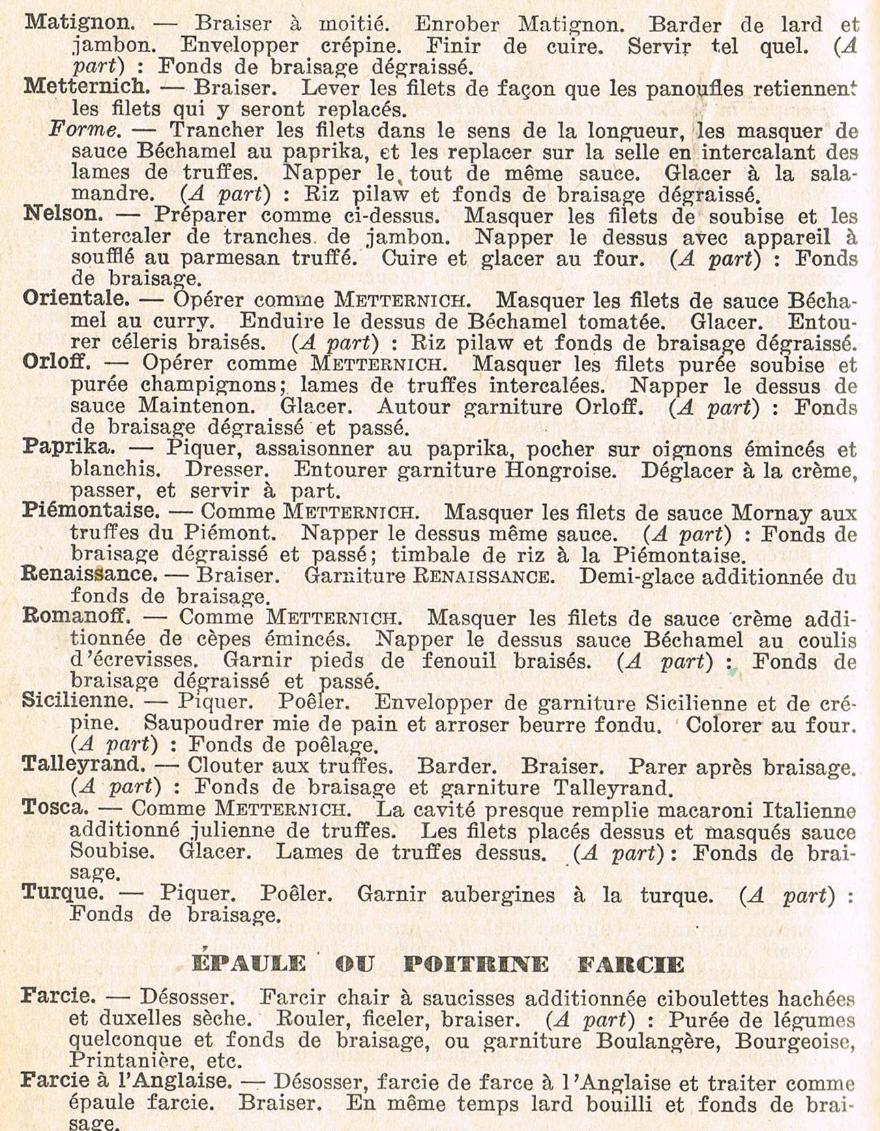
To see who Metternich was, click here and take your pick. You met him at the foot of the page here.
Our last look at Romanov follows. You read above that Noisettes de chevreuil (venison cutlets) Romanov are sauté and dressed in crown formation with pastry barquettes filled with cucumber/mushroom purée.
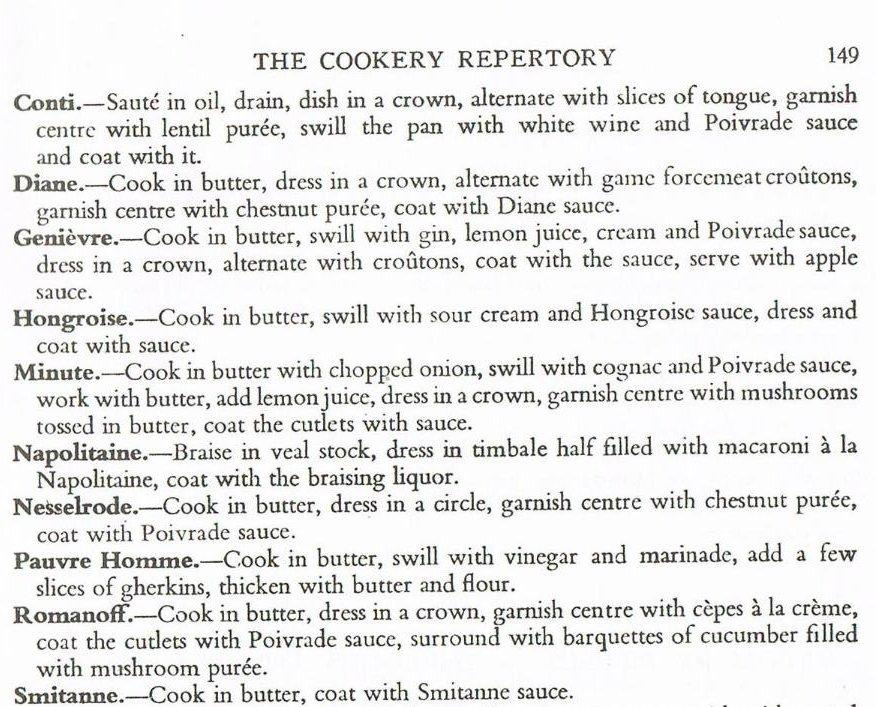

We move on to Timbale Tzarine.
You see that the chef needs to refer elsewhere. That has been done for you above. Here it is again:
If you hope to make Timbale Tzarine, the copper mould is lined with pastry and lardons follow. Add foie gras, truffles and snipe pieces and cover with pastry before baking. When cooked, top up with savoury jelly flavoured with Madeira. Cool, refrigerate, turn upside down on a dish and garnish with sliced truffle.
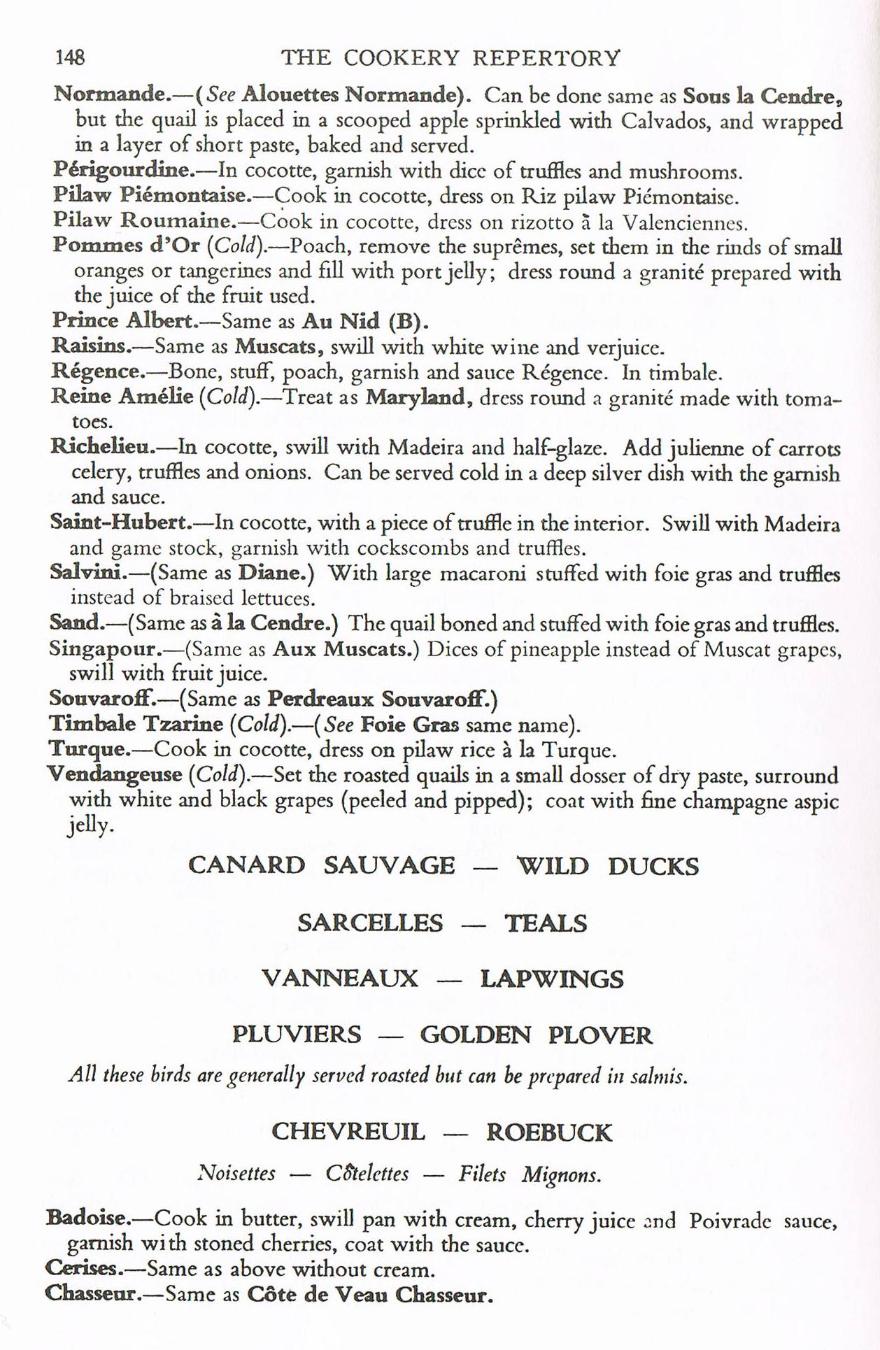
Jelly
This clears the mist surrounding jelly in the journal.
The Répertoire can be a challenge if an English version is not to hand. Gelée Moscovite - “sanglée legerement” which literally means “lightly strapped”. Go easy on the gelatine? You wouldn't tie a ribbon round it as with the Charlotte Russe. Gelée Russe, however, may help. The jelly is whisked when almost set and moulded as desired. More interesting than offering your visitors weak jelly. Gelée Marbrée (or Rubanée), while not Russian, is Gelée Russe made with varying flavours and colours and set in layers.
We look to the original text:
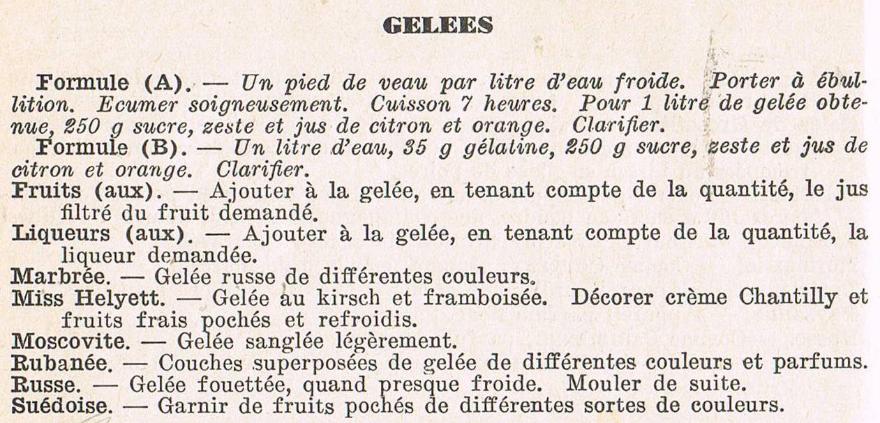
None the wiser?
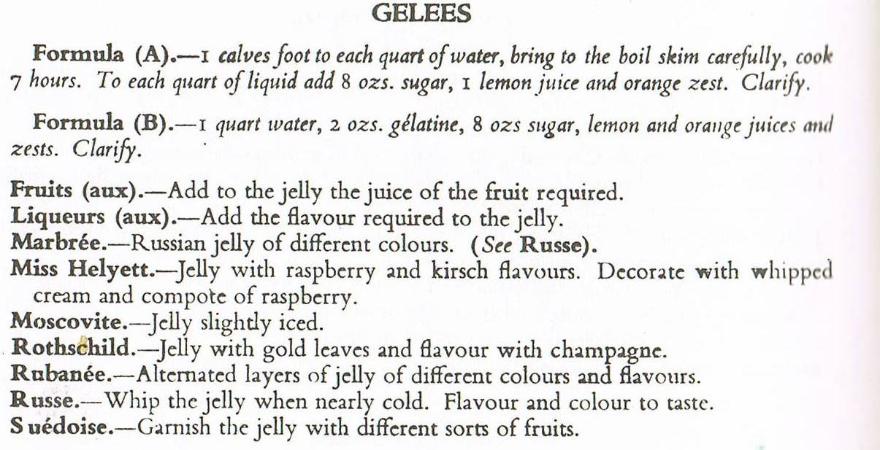
Moscovites at the time of publication are more than slightly iced.
Next time you serve jelly you had almost forgotten you had put it in the deepfreeze to set quickly, you enter the room with flourish and announce "Gelée Moscovite"!
Moscovite or Muscovite? It depends on whether your context is Moscow, Muscovy or the mineral. Put Moscovite into Google and you are switched to Muscovite. Our title prefers Moscovite as the Répertoire, written by those of French persuasion, prefers it.
